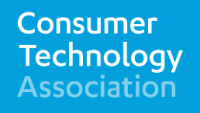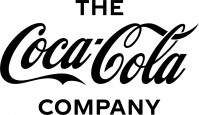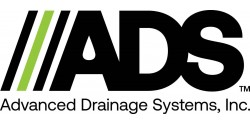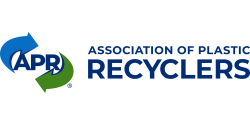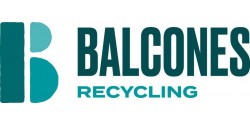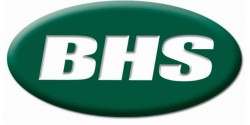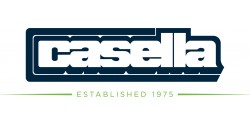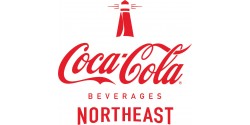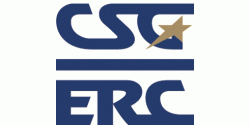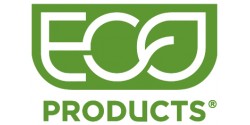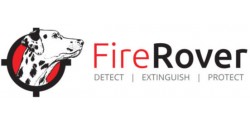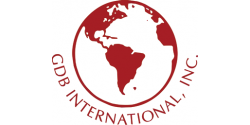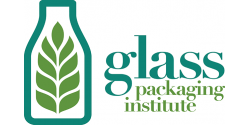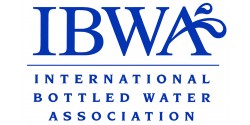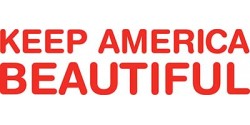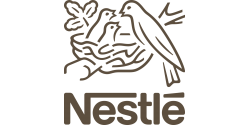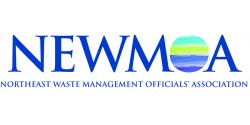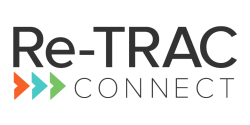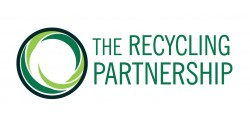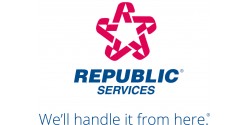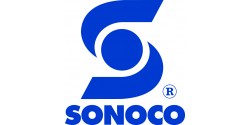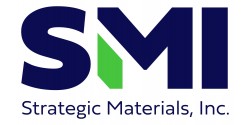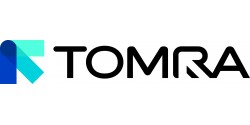December 2015
MEMBERSHIP
Renewing Supporting Members
Member Spotlight - swissRTec
NERC NEWS
- NERC’s Glass Forum a Huge Success!
- Presentations from NERC’s Glass Forum & Other Glass Resources Now Available
- Or Support NERC with a Donation of your Own
- Article Published in BioCycle Magazine - Food Scraps Composting at Schools
- NERC Blog Worth Repeating—Rethinking Wasted Food
NEWLY POSTED
- Contact Information for State Surplus Property Programs in 10 NERC States
- NERC Annual Report - FY 2015
STATE UPDATES
CONNECTICUT
MASSACHUSETTS
VERMONT
ADVISORY MEMBER NEWS
- Steel Associations Release Statement on Question of China’s Treatment as Non-Market Economy
- ISRI & OSHA Form Alliance to Promote Worker Safety
- ISRI Economist Testifies in Support of Recycling in Environmental Goods Agreement
- ISRI Calls on EPA to Respond to Safety Concerns Over Synthetic Turf
OF GENERAL INTEREST
NERC’s mission is to promote sustainable materials management by supporting traditional and innovative solid waste best practices, focusing on waste prevention, toxics reduction, reuse, recycling and organics recovery.
State and Advisory Member Updates, as well articles of General Interest and guest blogs are provided as submissions to NERC and may not reflect the policy or position of the Northeast Recycling Council, Inc.
NERC is an equal opportunity provider and employer.
MEMBERSHIP
Membership is key to NERC's regional and national committment to sustainable materials management. We are delighted to welcome renewing Supporting Members the Housatonic Resource Recovery Authority (HRRA) and Materials Innovation & Recycling Authority (MIRA). Thank you!
To see a complete listing of NERC's Members and Supporters, as well as the benefits of membership, visit the NERC Advisory Membership web page.
The broad spectrum of interests represented by NERC's Advisory Members, Individual Supporters, and Board Members and their willingness to participate significantly contribute to the unique and important role that NERC plays in recycling in the region.
For more information, contact Lynn Rubinstein, Executive Director
Member Spotlight - swissRTech
Technology Has an Address
Today’s recycling requires advanced technology to meet the demands of multiple material streams, hard to recover materials, and cost efficiencies. swissRTec offers a wide-range of equipment and processing systems to provide recycling solutions for e-scrap, mixed scrap metal, aluminum composites, white goods, car bodies and auto shredder residue (ASR), and, other composite materials.
Composites are objects comprised of more than one raw material. E-scrap, for example contains a wide ra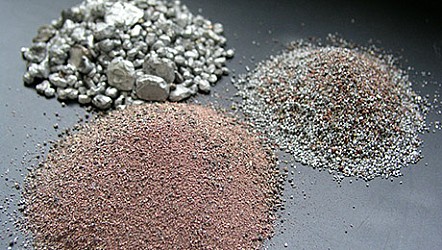 nge of composites, including electrical and electronic equipment, wires, printed circuit boards, and mixed plastics. By braking up and separating these composites valuable, high yield raw materials such as copper, aluminum, steel, and plastics can be recovered.
nge of composites, including electrical and electronic equipment, wires, printed circuit boards, and mixed plastics. By braking up and separating these composites valuable, high yield raw materials such as copper, aluminum, steel, and plastics can be recovered.
swissRTec prides itself on engineering, manufacturing, and commissioning processing solutions that can be tailored to meet the needs of often difficult to handle material streams, such as ASR. Using swissRTec’s high quality shredding and delamination/separation plants, recycling facilities can maximize recovery and purity rates for materials.
swissRTec America, Inc., headquartered in Kensington, New Hampshire is a wholly owned subsidiary of the Swiss-based swissRTec International. For decades the company has been marketing its technology and mechanical systems to the international recycling industry and opened the US office in 2014 to better service the North American market.
swissRTec’s motto, “Technology Has an Address” is particularly applicable in the growing field of composite material recycling. Auto shredder residue is one stream for which swissRTec has applied its expertise and technology to offer solutions that work. The 2015 European Union regulations require a recycling rate of 95% for scrapped cars. This is driving the recycling sector to look at innovative technologies to recover more materials, including the metals typically left behind in ASR. Though difficult to separate from the residue, the metals do offer potential high value due to their substantial copper content. And while such requirements do not exist in the U.S., ASR is a material stream of concern to the recycling industry.
Equipment with “Super Hero” Strength
According to Bernhard Mueggler, President and CEO of swissRTec America, “demand for larger recycling systems is growing trend in the marketplace. It’s a trend not likely to go away soon.”
The company’s Kubota Vertical Shredder can process large and small domestic appliances,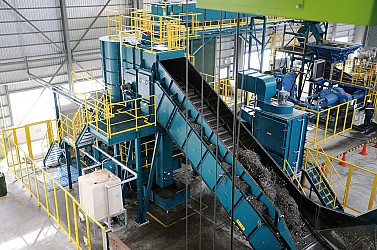 metal scrap and other bulky items. With its powerful breakers and multiple layers of grinders, it breaks down and grinds up materials down to one inch or less in size in a single pass. This vertical shredder can be used as a stand-alone unit or in combination with other processing technology. With the incorporation of magnets, eddy current separators, screens, sensor sorters, and other techniques, bulky material is quickly separated into high quality ferrous, non-ferrous, plastic, and other materials.
metal scrap and other bulky items. With its powerful breakers and multiple layers of grinders, it breaks down and grinds up materials down to one inch or less in size in a single pass. This vertical shredder can be used as a stand-alone unit or in combination with other processing technology. With the incorporation of magnets, eddy current separators, screens, sensor sorters, and other techniques, bulky material is quickly separated into high quality ferrous, non-ferrous, plastic, and other materials.
 Its cutting edge delamination and separation plant allows for additional processing and purification of non-ferrous metal concentrate for even higher yields. swissRTec’s largest delamination mill to date—the CCM20RT—is the result of more than a decade of experience. With a 6.5-foot rotor diameter it weighs in at 21 tons and has a drive with up to 840 horsepower. Along with downstream separation systems, it provides complete milling and high quality separation and is constructed to withstand the rigors of ASR processing.
Its cutting edge delamination and separation plant allows for additional processing and purification of non-ferrous metal concentrate for even higher yields. swissRTec’s largest delamination mill to date—the CCM20RT—is the result of more than a decade of experience. With a 6.5-foot rotor diameter it weighs in at 21 tons and has a drive with up to 840 horsepower. Along with downstream separation systems, it provides complete milling and high quality separation and is constructed to withstand the rigors of ASR processing.
What’s the process behind its powerful delamination mills? The latest impact milling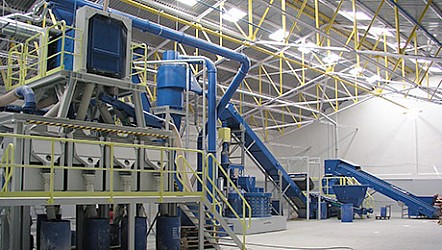 technology that forces thousands of collisions within the mills to break down pre-shredded composite materials which then “disintegrate” into individual components. These segregated materials are milled further into tiny, smooth balls for separation. Lower density material is separated from higher density material resulting in highly purified and valuable outputs, such as copper and aluminum.
technology that forces thousands of collisions within the mills to break down pre-shredded composite materials which then “disintegrate” into individual components. These segregated materials are milled further into tiny, smooth balls for separation. Lower density material is separated from higher density material resulting in highly purified and valuable outputs, such as copper and aluminum.
See swissRTec systems in action through videos posted on its website.
Recycling Commitment
swissRTec knows the importance of recovering valuable metal and other raw materials to use in the production of new goods and materials.
With its high-efficiency drive systems, the company reports that operators also benefit from the lower energy cost, seeing at least a 5 percent reduction, according to swissRTec.
And, as Mr. Mueggler states, “By keeping its core focus on shredding, delamination, separation, swissRTec is able to adapt to changing industry trends, meet customer demands, provide profitable material recovery, and continue its dedication to the recovery of high-yield and quality valuable raw materials.”
With its relatively new venture into the North American market, Mr. Mueggler says that “the international company felt that becoming a NERC Advisory Member would help us promote the swissRTec name and business throughout the United States. NERC members are leaders in materials management which is our core business.”
NERC NEWSNERC’s Glass Forum a Huge Success!
In response to interest expressed by many in the Northeast about glass recycling issues, the Northeast Recycling Council held a one-day Forum on glass recycling and recycled glass markets in Providence, Rhode Island on November 10th. The Forum included presentations from and discussions with recycled glass collectors, processors, and manufacturers. The great 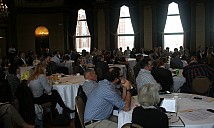 turn out and obvious enthusiasm for supporting glass recycling made the Forum an event to remember.
turn out and obvious enthusiasm for supporting glass recycling made the Forum an event to remember.
Despite the negative press that glass recycling has been getting, the overarching message at NERC’s Forum was very positive. Below is a list of points discussed and supported at the Glass Forum:
- The number of times glass containers can be recycled is limitless.
- Recycled glass retains the embodied energy from the first time it was transformed from raw materials, thus requiring less energy when used in manufacturing new products.
- Communities can successfully source separate glass containers, with or without a bottle bill.
- Single stream MRFs can be designed to remove glass at the beginning of the material separation process.
- There are available markets for recycled glass (i.e., glass containers, fiberglass insulation, aggregate, and concrete applications).
- Glass processors and manufacturers are seeking more supply of clean container glass.
- The message expressed by glass manufacturers to municipal and state governments is to “Continue Collecting Glass.”
NERC would like to thank the Forum speakers, sponsors, exhibitors, and registrants for participating in the Forum and for helping us to achieve a successful event. Everyone’s involvement in the Forum allowed us to learn about different strategies that can be used to support glass recycling, as well as the different industry sectors involved with glass markets.
For more information about NERC’s Glass Forum or future events, contact Mary Ann Remolador, NERC’s Assistant Director.
Presentations from NERC’s Glass Forum & Other Glass Resources Now Available
To continue the momentum started at NERC’s Glass Forum about glass recycling and glass markets, NERC has posted all of the presentations from its Glass Forum on its website.
Also the keynote speaker at the Forum, Dylan de Thomas of Resource Recycling Inc., has graciously provided us with the reference documents used for his presentation. The documents, including his Forum presentation, can be found on Dropbox.
For more information about NERC’s Glass Forum presentations, contact Mary Ann Remolador, NERC’s Assistant Director.
Or Support NERC with a Donation of your Own!
Giving Tuesday - December 1st this year - has become widely recognized as a collaborative day of national charitable giving. As you make donation decisions this month, please consider including NERC on your list. NERC is a 501(c)(3) charitable corporation and your donations may be deductible.
NERC will use your contributions to support its activities and programming to promote sustainable materials management. For more information, contact Lynn Rubinstein, NERC Executive Director.
And, thank you!
Article Published in BioCycle Magazine - Food Scraps Composting at Schools
As a follow-up to NERC’s successful Vermont School Recycling and Composting, NERC staff Athena Lee Bradley, wrote an article about the project for BioCycle Magazine. The article, Food Scraps Composting at Schools, was published in October. It provides an overview of the project, including: Steps to School Composting Success,Saving Money through Reduction, and Lessons Learned. The article also included updates on other school recycling and composting projects in Vermont.
For more information contact Athena Lee Bradley, Projects Manager.
NERC Blog Worth Repeating—Rethinking Wasted Food
As the holidays are just around the corner, it seems timely once again to address wasted food.
According to Agriculture Secretary Tom Vilsack, "An average family of four leaves more than two million calories, worth nearly $1500, uneaten each year.”
Recently the first-ever national food waste reduction goal was adopted in our country, calling for a 50-percent reduction by 2030. To help reach this goal, the United States Department of Agriculture (USDA) stated that the federal government will lead a “new partnership” with charitable organizations, faith-based organizations, the private sector and local, state and tribal governments to “reduce food loss and waste in order to improve overall food security and conserve our nation's natural resources.”
Stated EPA Administrator Gina McCarthy regarding the new goal, "[l]et's feed people, not landfills. By reducing wasted food in landfills, we cut harmful methane emissions that fuel climate change, conserve our natural resources, and protect our planet for future generations."
 The US EPA’S Food Recovery Challenge addresses the economic, environmental and social impacts of food waste and helps participants to save money while protecting the environment and benefiting their communities. The Challenge asks organizations, including grocers, universities, stadiums, restaurants, and other venues to make a commitment to three food diversion actions: prevention, donation and composting. Through this free program participants receive tools for implementing wasted food reduction, recovery, and diversion programs, assessing the costs and benefits, plus positive recognition for participation.
The US EPA’S Food Recovery Challenge addresses the economic, environmental and social impacts of food waste and helps participants to save money while protecting the environment and benefiting their communities. The Challenge asks organizations, including grocers, universities, stadiums, restaurants, and other venues to make a commitment to three food diversion actions: prevention, donation and composting. Through this free program participants receive tools for implementing wasted food reduction, recovery, and diversion programs, assessing the costs and benefits, plus positive recognition for participation.
Food Recovery Challenge participants are asked to take three simple steps: conduct an assessment of their current practices, set a goal for reducing the amount of food waste being thrown out, and commit to a more sustainable approach by tracking their efforts.
Leading the Way
While many of us are aware of the Food Recovery Challenge and promote it to our business and institutions, there is another important role we can play in helping to reduce wasted food—become a Food Recovery Challenge Endorser.
Endorsers serve a key role in promoting the wasted food problem, helping others to learn  about the issue and the actions that can be taken to prevent it. Simply put, Endorsers do something many of us do on a regular basis—provide resources to others to help them reduce their generation of wasted food. Endorsers may include, but are not limited to, local and state government agencies, religious organizations, trade associations, businesses, waste management facilities, nonprofit organizations, and individuals.
about the issue and the actions that can be taken to prevent it. Simply put, Endorsers do something many of us do on a regular basis—provide resources to others to help them reduce their generation of wasted food. Endorsers may include, but are not limited to, local and state government agencies, religious organizations, trade associations, businesses, waste management facilities, nonprofit organizations, and individuals.
Endorsers are asked to determine outreach activity goals, document and track what outreach and educational activities are conducted, and share these outreach activities through the Challenge program. Examples of outreach activities include: newsletters, presentations, events, meetings, weblinks and website postings, and use of social media.
The goal is to provide outreach and education to grocers, colleges, universities, restaurants, and other venues about the importance of sustainable food management and recruit participants to join the EPA’s Food Recovery Challenge.
Working with businesses and institutions, offering to assist with waste assessments, training them in ways to prevent and reduce food waste, and connecting them to Challenge resources, participant success stories, as well as the free expertise on reducing wasted food available through the Challenge and tracking software can provide enormous benefits to participants.
It’s easy to join the Challenge, it’s free, and it can help our nation reach its goal to reduce wasted food, help those who are food insecure, and reduce our carbon footprint.
By Athena Lee Bradley
NEWLY PUBLISHED
Contact Information for State Surplus Property Programs in 10 NERC States
For many years, NERC has published a contact information list for state surplus property programs - but only in New England.
That resource has been updated and expanded to include Delaware, New Jersey, New York and Pennsylvania. All of these states - with the excpetion of Rhode Island - have state surplus property programs. These programs offer an excellent opportunity to buy used property for discounted rates. Be sure to take a look.
NERC Annual Report - FY 2015
The NERC FY 2015 Annual Report is now available.
NERC's Bylaws Modified to Expand Purpose
At the November NERC Board of Directors meeting NERC's bylaws were amended to expand the organization's purpose "to conduct research and educate the public about the environmental and economic benefits of recycling and source reduction in the Northeast as well as the United States." Previously, the bylaws listed the ten Northeast states as its service area.
STATE UPDATES
CONNECTICUT
Application Period Now Open for Electronic Recyclers
The Connecticut Department of Energy and Environmental Protection (CT DEEP) announces the opening of its 60-day application period for electronic recyclers interested to become an approved Covered Electronic Recycler (“CER”) pursuant to Section 22a-638-1(b)(2)(A) of the Regulations of Connecticut State Agencies.
The application period will begin on Tuesday, December 1, 2015 and end on Friday, January 29, 2016. For more information, you should visit CT DEEP’s website at Connecticut's E-waste Recycling Program, which includes this notice, the recycler application forms and instructions, and call in information for a planned teleconference open to the public that will be held on Wednesday, December 2, 2015 at 10am EST.
Should you have any questions regarding this notice or filling out CT DEEP’s newly prescribed application forms, please contact Mark Latham, CT DEEP, via email at mark.latham@ct.gov or by phone (860) 418-5930.
CT DEEP Announces 50 Million Pounds of Unwanted Electronics Diverted for Recycling under Connecticut’s Extended Producer Responsibility Law
CT DEEP published its 2015 annual report containing measures and goals for implementing the program and its effectiveness. The program is one of several successful Extended Producer Responsibility (“EPR”) laws requiring the manufacturers to pay for the recycling of their products.
Under the Electronics Recycling Law, residents can bring unwanted computer equipment and televisions to more than 160 approved locations across the state. Collection locations include local municipal transfer stations, various retail stores and not-for-profit centers. The equipment is transported to DEEP-approved recyclers that recover valuable materials such as steel, aluminum, copper, plastics and rare metals and process them for reuse into new products. According to reports provided by the state’s approved electronic recyclers, Connecticut's state-wide electronics recycling program has collected more than 50 million pounds of equipment since the program’s inception in 2011. As a measure to the program’s success in responsible recycling, CERs reported 2.1 million pounds scrap metal and 1.5 million pounds of plastic were recycled and diverted from disposal.
For more information, visit www.ct.gov/DEEP/e-waste or email Mark Latham.
MASSACHUSETTS
Baker-Polito Administration Awards $3.5 Million in Grants for Recycling, Composting & Waste Reduction
The Baker-Polito Administration has announced $3.57 million in grants to 80 cities, towns, regional groups and non-profit organizations to increase the diversion, reuse, composting and recycling of materials in the solid waste stream. The announcement coincides with "America Recycles Day" on Sunday, a national initiative to promote the benefits of recycling.
"Recycling reduces the waste stream, saves money on disposal costs, cuts greenhouse gas emissions, creates renewable energy, and stimulates the economy," said Governor Charlie Baker. "Through these grants, we hope to encourage local recycling efforts that will help Massachusetts meet its ambitious environmental goals."
"Communities and their residents want to do the right thing and recycle has much material as possible," said Lt. Governor Karyn Polito. "These grants will help each community attain their locally set goals of reducing the waste stream and protecting natural resources."
The grants are funded through the Sustainable Materials Recovery Program (SMRP), which was created under the Green Communities Act and is administered by the Massachusetts Department of Environmental Protection (MassDEP). The SMRP offers funding for recycling, composting, reuse and source reduction activities that will reduce the amount of waste disposed of in landfills and incinerators. Waste prevention and recycling reduces greenhouse gas emissions by capturing the embodied energy in every-day product and packaging waste and converting these sources into new products with a smaller carbon footprint.
"The Baker-Polito Administration and our partners in the Legislature have supported the Green Communities Act to help reduce greenhouse gas emissions and protect the environment for the generations to come," said Energy and Environmental Affairs Secretary Matthew Beaton. "Reducing waste by recycling and composting improves the health of our communities and the vitality of our businesses."
"Organics, paper, metals and plastic constitute more than 65 percent of the materials we throw away today, and the Commonwealth has made it a priority to recycle and compost at least half of that valuable material by 2020," said MassDEP Commissioner Martin Suuberg. "These grants will help us and our municipal partners meet this progressive environmental goal."
Funds have been awarded in several categories, including start-up incentives for Pay-As-You-Throw (PAYT) programs, wheeled-carts for curbside collection of recyclables and kitchen food waste for composting, large containers for collection of target materials at municipal transfer stations, funding for local recycling enforcement coordinators, school recycling assistance programs, organics capacity building projects and innovative waste reduction projects. The grants range from $288 up to $350,000.
"I would like to commend the Baker-Polito Administration on their continued support of the environment," said Senator Anne M. Gobi (D-Spencer), Senate Chair of the Joint Committee on Environment, Natural Resources and Agriculture. "Promoting recycling is important to a sustainable future."
"I want to thank the Baker-Polito Administration for working closely with municipal leaders to identify opportunities for enhanced recycling and waste reduction," said Senator Michael J. Rodrigues (D-Westport). "Massachusetts communities, organizations and residents have long demonstrated innovation and initiative in maintaining the health of our planet, and this partnership with the state will build upon that progress."
"Thank you to the Baker-Polito Administration for rewarding cities and towns for the hard work they do in terms recycling," said Representative Paul A. Schmid (D-Westport), House Chairman of the Joint Committee on Environment, Agriculture and Natural Resources. "It is important to preserve our land for future generations and by keeping useful materials out of landfills we are doing just that."
"I appreciate that the Baker-Polito Administration is supporting the recycling efforts planned for Barre and North Brookfield, and across the entire Commonwealth," said Representative Donald R. Berthiaume, Jr. (R-Spencer). "These grants will help the communities in my district set up mattress recycling programs and keep these hard-to-handle items out of the waste stream."
The Town of Bourne will receive up to $350,000 towards construction of an anaerobic digestion facility at the town's former landfill. This project is being jointly funded by the Massachusetts Clean Energy Center.
During this SMRP funding round, a total of $604,265 has been allocated for six conditional grants that communities can use to implement PAYT programs. PAYT provides a fair and equitable system in which residents control what they pay for trash disposal by recycling and composting. The grants will be disbursed to assist with start-up costs, such as producing public education materials and purchasing PAYT bags and recycling bins.
A new mattress recycling incentive will be awarded to 48 communities across the state. This grant will pay for the cost of recycling residential mattresses that are collected and recycled by one of three mattress recycling companies on Massachusetts state contract. Very little mattress recycling currently occurs in Massachusetts, even though about 90 percent of a mattress' components is recyclable. Recycling is a preferred management method since mattresses are bulky and costly to dispose of in landfills and incinerators. MassDEP has allocated up to $1 million to pay for the recycling of mattresses and expects the increased supply will help drive a stronger recycling market.
Twelve communities were awarded $925,231 in SMRP grants for the purchase of wheeled carts for the implementation or expansion of curbside single-stream or dual-stream recycling. The grant provides a $10- or $20-per-cart subsidy for the purchase of carts 64 gallons or larger. Carts make recycling more convenient for residents, producing higher recycling rates and less trash. Another four communities will receive a total of $184,500 in grants for curbside food waste carts.
Twenty-four communities will receive a total of $153,519 to expand their recycling programs to collect targeted materials at municipal recycling drop-off or transfer stations or increase the efficiency of recycling cardboard with compactors that reduce material density and reduce hauling costs. Grants are for the purchase of roll-offs or compactors for the collection of source-separated wood, "rigid bulky" plastics, and source-separated food waste.
Five communities will receive a total of $154,602 in grants to help school districts implement or expand recycling of paper, cardboard, bottles and cans in all schools in their districts.
Two communities are expected to receive a total of $77,000 to support the hiring of local waste reduction enforcement coordinators to assist in enforcing mandatory recycling, compliance with single-stream recycling or compliance with existing PAYT programs.
One community and two non-profit organizations will receive a total of $118,090 for waste reduction projects that will include outreach campaigns and summits to educate residents about correct recycling practices and how to reduce contamination within the recycling materials stream.
An alphabetical list of the city, town, regional group or non-profit organizations that have been conditionally awarded a grant, as well as more information about the SMRP program, can be seen here:MassDEP-Recycle ![]() .
.
The Green Communities Act requires that a portion of the proceeds from the sale of Waste Energy Certificates (WECs) be directed to recycling programs approved by MassDEP. The WEC payments are deposited into the SMRP Expendable Trust, which is then used to fund grants, technical assistance and education to help communities, businesses and institutions increase recycling and reduce waste.
MassDEP is responsible for ensuring clean air and water, safe management and recycling of solid and hazardous wastes, timely cleanup of hazardous waste sites and spills and the preservation of wetlands and coastal resources.
VERMONT
Vermont Launching Nation’s First Single-Use Battery Recycling Program
Call2Recycle, Inc., North America’s Leading Battery Stewardship Organization, to Administer Free and Convenient Statewide Collection Program
The State of Vermont has approved Call2Recycle, Inc. — North America’s first and largest consumer battery stewardship organization — to implement the first mandated producers-funded U.S. primary (single-use) battery recycling program beginning January 1, 2016, making battery recycling more easy and convenient for residents.
For 21 years, Call2Recycle has voluntarily served the state of Vermont with a free rechargeable battery collection and recycling program. The new law minimizes consumer confusion, as residents will no longer need to separate out single-use batteries when they recycle. This program will also help maximize the number of batteries being diverted from landfill.
Building on its current network of nearly 100 drop-off sites within 10 miles of 86 percent of Vermont residents, Call2Recycle will continue to make it easy and convenient to recycle batteries. At the start of the New Year, Vermont residents will be able to recycle their household batteries (including AA, AAA, C, D, and other single-use battery types) at a wide variety of convenient locations, including retailers, municipalities, libraries, and other frequently visited locations.
Vermont’s Primary Battery Law requires producers of single-use batteries to provide a Stewardship Plan to manage the proper recycling of those batteries sold in Vermont. Numerous battery producers have designated Call2Recycle as its stewardship organization to fulfill its obligations in the state and will be funding the approved plan.
Call2Recycle has led a nationally embraced stewardship program for collecting and recycling batteries and cellphones since 1994. Last year the organization reached a significant milestone and announced that 100 million pounds of used batteries had been diverted from landfills and responsibly recycled during the past 21 years thanks to their stewardship work.
“Vermont’s battery program marks a pivotal moment in our country’s efforts to reduce the amount of materials in our landfills through responsible recycling,” said Carl Smith, CEO & president of Call2Recycle, Inc. “Call2Recycle is thrilled to be at the forefront of battery stewardship and excited to be applying its expertise to offer a comprehensive battery recycling solution to Vermont residents.”
About Call2Recycle, Inc.
Founded in 1994, Call2Recycle, Inc.— operating North America’s first and largest consumer battery stewardship program—is a non-profit organization that collects and recycles batteries at no cost for municipalities, businesses and consumers. Since 1996, Call2Recycle has diverted 100 million pounds (45 million kilograms) of batteries and cellphones from the solid waste stream and established over 34,000 collection sites throughout the U.S. and Canada. It is the first program of its kind to receive the Responsible Recycling Practices Standard (R2) certification. Learn more at call2recycle.org or 877-723-1297. Follow at facebook.com/call2recycle or twitter.com/call2recycle.
ADVISORY MEMBER NEWS
All Advisory Member News articles are provided as submissions to NERC and may not reflect the policy or position of the Northeast Recycling Council, Inc.
Steel Associations Release Statement on Question of China’s Treatment as Non-Market Economy
The American Iron and Steel Institute, the Steel Manufacturers Association, the Canadian Steel Producers Association, CANACERO (the Mexican steel association), Alacero (the Latin American steel association), EUROFER (the European steel association,) Instituto AcoBrasil (the Brazil Steel Institute), the Specialty Steel Industry of North American and the Committee on Pipe and Tube Imports today released a joint statement regarding concerns about China’s attempt to gain market economy status in December 2016:
“The global steel industry is currently suffering from a crisis of overcapacity and the Chinese steel industry is the predominant global contributor to this problem.
“Estimates from the OECD Steel Committee indicate that there is almost 700 million metric tons of excess steel capacity globally today. China’s overwhelmingly state-owned and state-supported steel industry has an overcapacity ranging from 336 to 425 million metric tons and it is expected to grow in the coming years. This situation, together with a declining steel consumption, has resulted in record levels of steel exports from China to the rest of the world in 2014 – and which are on track to exceed 100 million metric tons this year.
“China has claimed that it should be automatically accorded treatment as if it were a market economy after the 15th anniversary of its accession to the World Trade Organization (WTO) in December 2016. We disagree.
“It is the view of steel producers in Europe and North and South America that China’s Protocol of Accession to the WTO does not automatically require governments to treat imports from China as if they were from a market economy country as of December 2016. While one small part of Section 15 of China’s Protocol (subparagraph 15(a)(ii)) expires on December 11, 2016, the remainder of Section 15 will remain in effect. These remaining provisions allow WTO members to treat China as a non-market economy country unless the Government of China or Chinese producers can show that they operate under market economy conditions.
“Given the continuing significant role of the Chinese government in many key aspects of the Chinese economy, and especially in its state-owned and controlled steel sector, there can be no question that China remains very much a non-market economy today.
“For the steel sector, recognition or treatment of China as a market economy at the end of 2016 would coincide with the peak of Chinese excess steelmaking capacity, and record level of exports to international markets, including the US, the EU, and Latin America.
“Given the enormous economic and social impacts that will result from the premature recognition of China as a market economy, we urge governments around the world to undertake a comprehensive assessment of the continuing role of the state in the Chinese economy and industry, as well as an assessment of the impact on industries around the world, if China were to be treated as a market economy before it made the necessary reforms to ensure that market forces were in fact allowed to operate fully in the Chinese economy.”
Article provided by the Steel Recycling Institute
ISRI & OSHA Form Alliance to Promote Worker Safety
The Institute of Scrap Recycling Industries (ISRI) and the U.S. Department of Labor’s Occupational Safety and Health Administration (OSHA) have teamed up in forming an Alliance with the mutual goal to promote the improvement of health and safety throughout the recycling industry. The Alliance is working to provide ISRI’s members and others with information, guidance, training, and other resources to protect the health and safety of workers within the scrap recycling industry. This Alliance is a continuation of ISRI’s effort to promote safety among all workers in the industry.
The Alliance outlines its major goal of promoting a safety culture throughout the scrap recycling industry, working as a whole towards a decline in workplace-incidents and towards the prevention of worker exposure to hazards. Injury, illness, and hazard exposure data will be used to prioritize areas of emphasis for Alliance activities.
It is anticipated that alliance activities will focus in the following three areas:
- Raising Awareness of OSHA’s Rulemaking and Enforcement Initiatives;
- Training and Education, including improving existing resources to promote greater utilization and improved safety outcomes, as well as the development and dissemination of new tools, in different languages as appropriate; and
- Communications and Outreach.
Article provided by ISRI.
ISRI Economist Testifies in Support of Recycling in Environmental Goods Agreement
The Institute of Scrap Recycling Industries’ (ISRI) Chief Economist Joe Pickard testified before the U.S. International Trade Commission last month in order to support recognition of recycled commodities and recycling equipment as environmental goods and to inform the Commission of the benefits of tariff reduction.
Joe Pickard’s testimony educated the Commission on the need to promote the trade of environmental goods in order to push society into developing a more sustainable environment, highlighting the fact that recycling has always played a huge part in moving to achieve this goal.
Pickard also outlined the importance of eliminating tariff barriers on the U.S. recycling industry. He described the economic and trade benefits of this action, as well as the benefits to the environment. He ended his testimony by announcing ISRI’s commitment to providing the USITC with any necessary information about benefits related to the inclusion of harmonized trade codes covering the full range of recycled commodities and recycling equipment.
Article provided by ISRI.
ISRI Calls on EPA to Respond to Safety Concerns Over Synthetic Turf
The Institute of Scrap Recycling Industries (ISRI) recently released a letter to the U.S. Environmental Protection Agency (EPA) Administrator Gina McCarthy regarding the growing fear amongst the public regarding the safety of synthetic turf made with crumb rubber. The fear is due to multiple media outlets attempting to understand the relationship between recycled rubber in turf and unfavorable health effects, without regarding more than 75 studies that indicate otherwise.
The letter outlines the amount of research that has been done regarding the synthetic turf and crumb rubber that is made from recycled tires, and informs the public that all of the studies have found no reason to believe that the turf is causing negative health effects. One of the studies researching this issue was done by EPA in 2009, and came to the conclusion that the levels of particulate matter, metals, and volatile organic compound concentrations in wire sample above synthetic turf were similar to background levels and all concentrations of particulate matter, zinc, and lead were below levels of concern. Another specific study is referenced, informing the public that the New York State Department of Health came to the conclusion that the chemical exposures from the crumb rubber are not threatening to the public’s health.
Article provided by ISRI.
OF GENERAL INTEREStRethinking the Holidays
The holiday season is a time to share good food. It is also a time of wasted food. Between Thanksgiving and New Year’s we toss out three times as much food as at other times of the year.
 As material managers, we can practice and present wasted food reduction tips, including the following:
As material managers, we can practice and present wasted food reduction tips, including the following:
Be a Smart Shopper
- Plan your menu according to the number of people who will be eating. Love Food Hate Waste has a portion planner that can help you plan. Cooking Turkey? Butterball provides a handy calculator for how much turkey and stuffing to prepare for guests (and leftovers).
- Check your cupboards, refrigerator, and freezer to see what you already have in stock and make your shopping list accordingly.
- Stick to your list! Try to resist impulse buys and sales!
Think small
- Using smaller plates at meal time can help induce people to take smaller portions. A “trick” practiced in restaurants—placing a smaller plate on a larger one makes portions look bigger. Guests can be politely encouraged to take smaller portions and return for additional helpings if they are still hungry.
- Letting guests serve themselves will help to reduce the amount of unwanted food left on plates.
Planning for leftovers
- Remember food safety…hot foods shouldn’t be left out longer than two hours.
- Stock up on empty containers to use for storing leftovers.
- Send leftovers home with guests.
- Plan for lunches and quick meals by storing leftovers in smaller individually-sized containers.
- Be sure to label containers with their contents.
- Be creative with leftovers—explore new recipes. There are lots of creative tips for how to repurpose holiday leftovers. Love Food Hate Waste also offers some excellent leftover recipes.
- Consider freezing foods for later use.
Donating Excess
- Extra canned and dried foods can be donated to local food banks and shelters. Many stores and organizations conduct holiday food drives or if you don’t know where your nearest food bank is, check out the Food Bank Locator.
Communities Working to Reduce Wasted Food
NERC’s Blog Worth Repeating—Rethinking Wasted Food—describes an easy step that governments, organizations, businesses, and others can do to help reduce wasted food, join EPA’s Food Recovery Challenge.
There are also some innovative programs being implemented to promote wasted food reduction.
Tompkins County Solid Waste
Tompkins County Solid Waste in New York State has embarked on a new reducing food waste campaign. Helpful tips on reducing wasted food include: Smart Shopping, Smart Storage, and Smart Prep. They also created a new video, starring local celebrity chef Emma Frisch, containing tips for reducing wasted food and repurposing leftovers to make “new” meals.
Rhode Island Resource Recovery Corporation
Rhode Island Resource Recovery Corporation (RIRRC) is promoting EPA’s Food Too Good to Waste Program. The program includes “Four Smart Strategies to Implement”—Smart Shopping: Buy What You Need; Smart Storage: Keep Fruits and Vegetables Fresh; Smart Prep: Prep now, eat later; and, Smart Saving: Eat What you Buy. Each strategy includes a list of easy to follow tips, along with “tools” that can be downloaded: a Shopping List Tool, a Food Storage Guide, and an "Eat Me First" Prompt. RIRRC also offers public presentations on Food Too Good to Waste.
Through the Rhode Island Food Policy Council and other local agencies, and with funding from the Environmental Protection Agency, the Food Too Good to Waste program is being piloted in Providence.
For more information on wasted food reduction, contact Athena Lee Bradley, Projects Manager. Through its Implementing the Food Recovery Hierarchy in Vermont project, NERC is putting together a compendium of wasted food reduction, recovery, and composting projects. Have a program or project you want to share? Send your program information to Athena.


